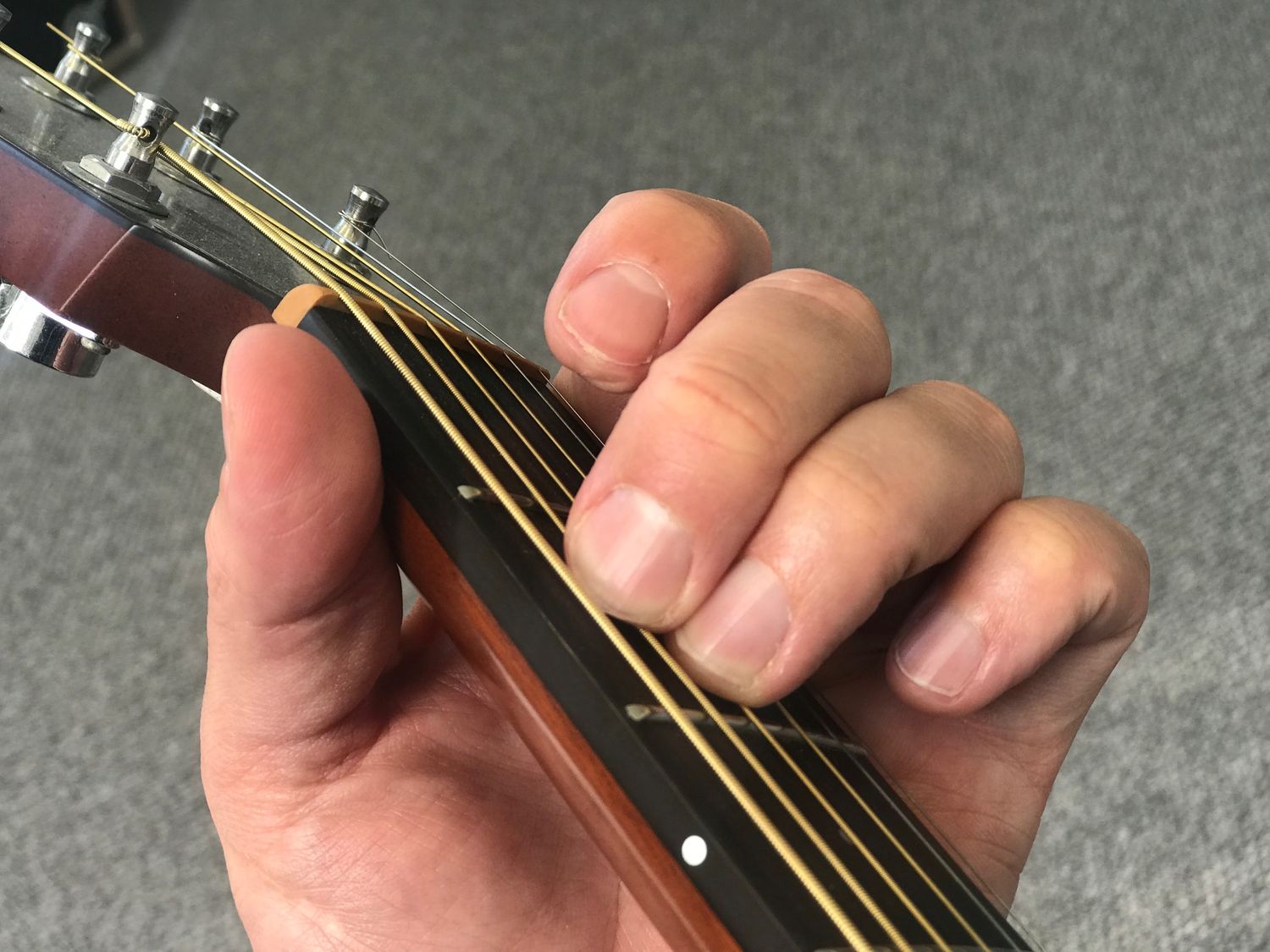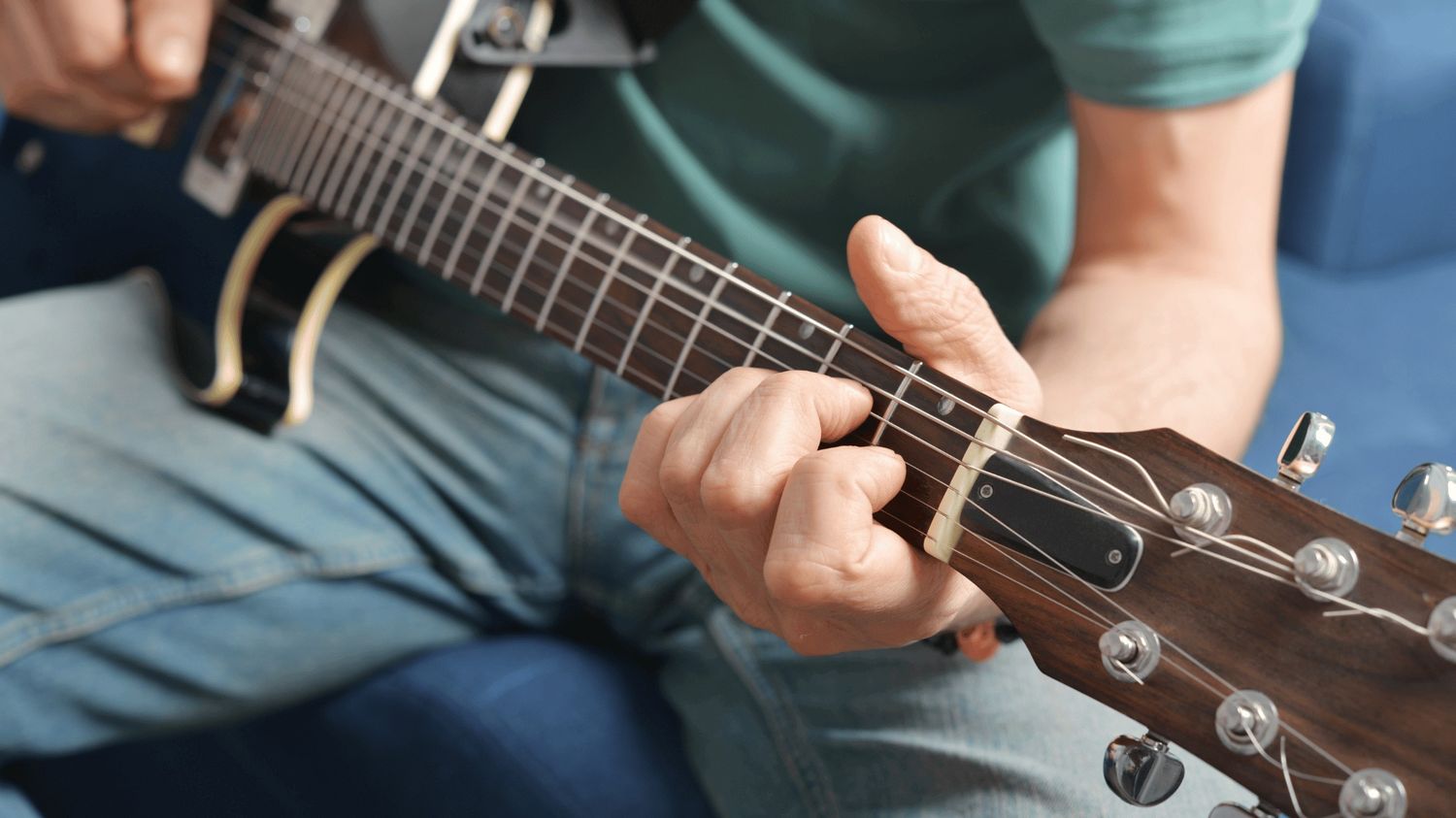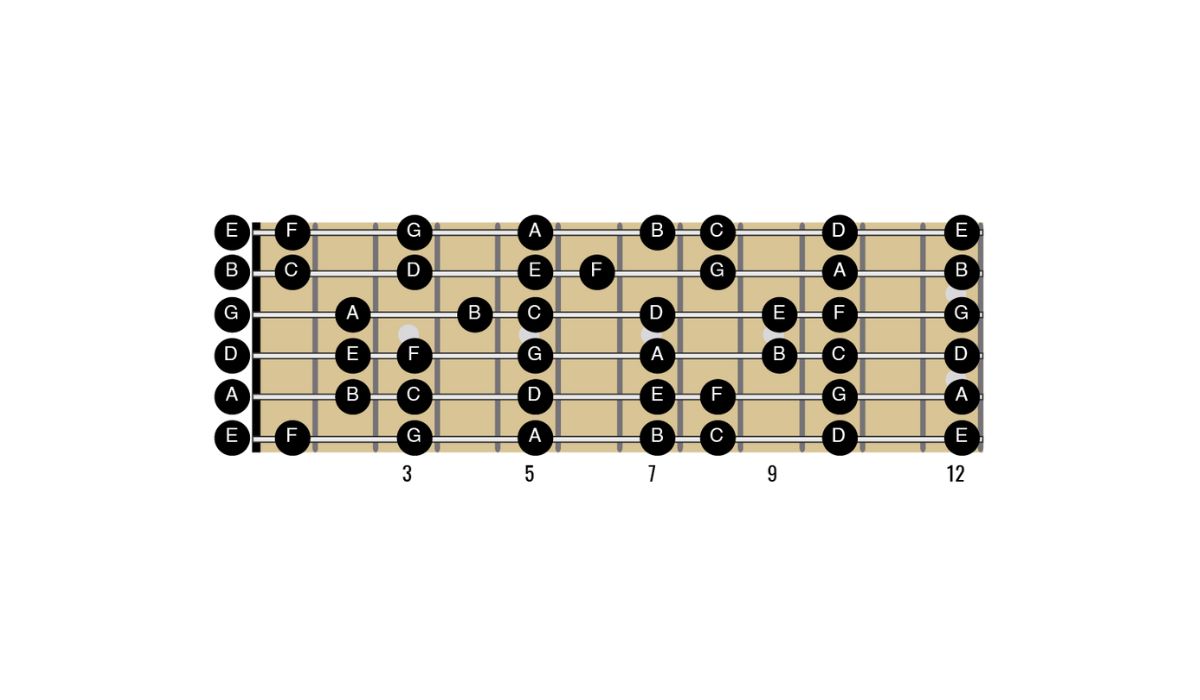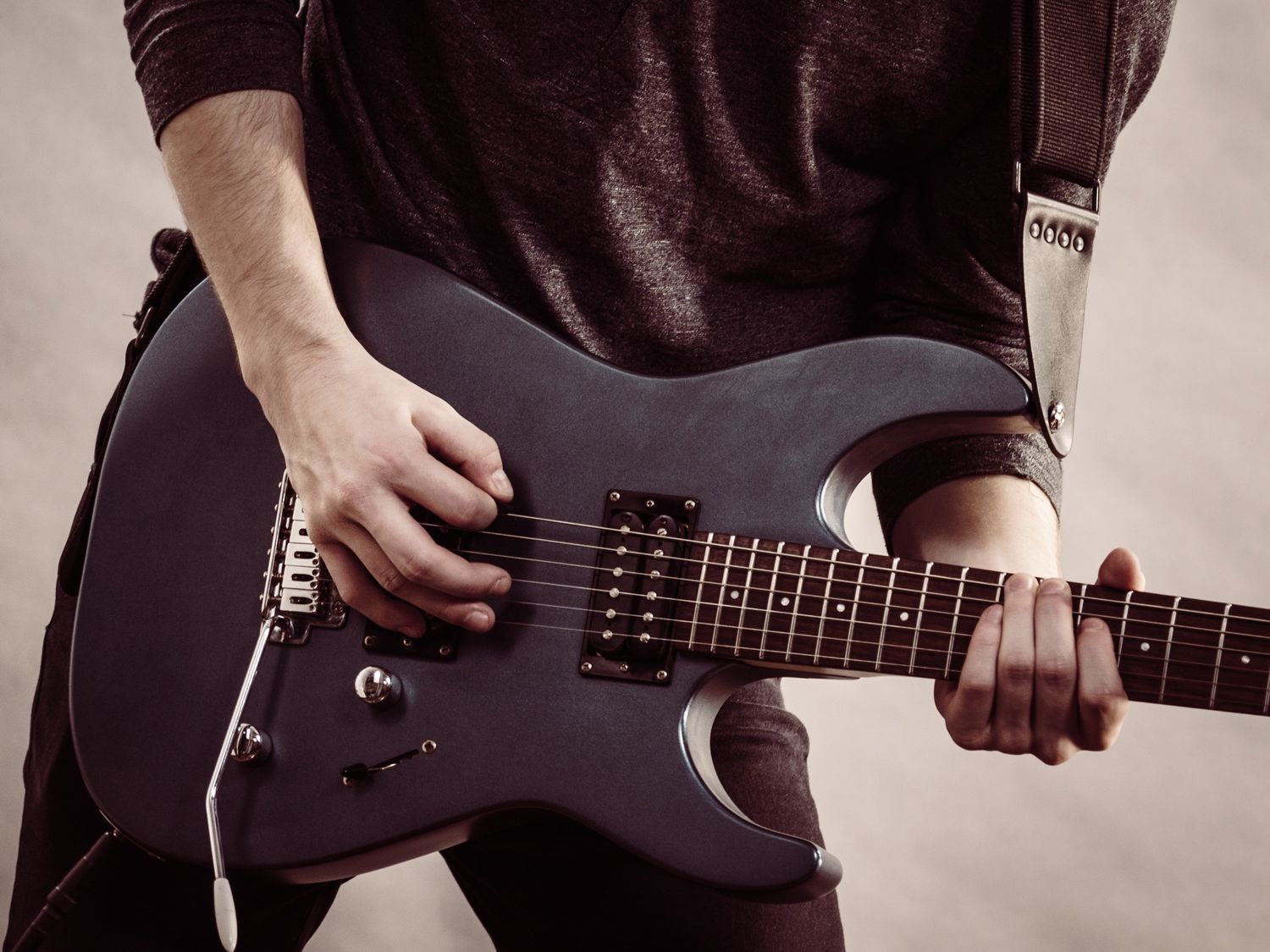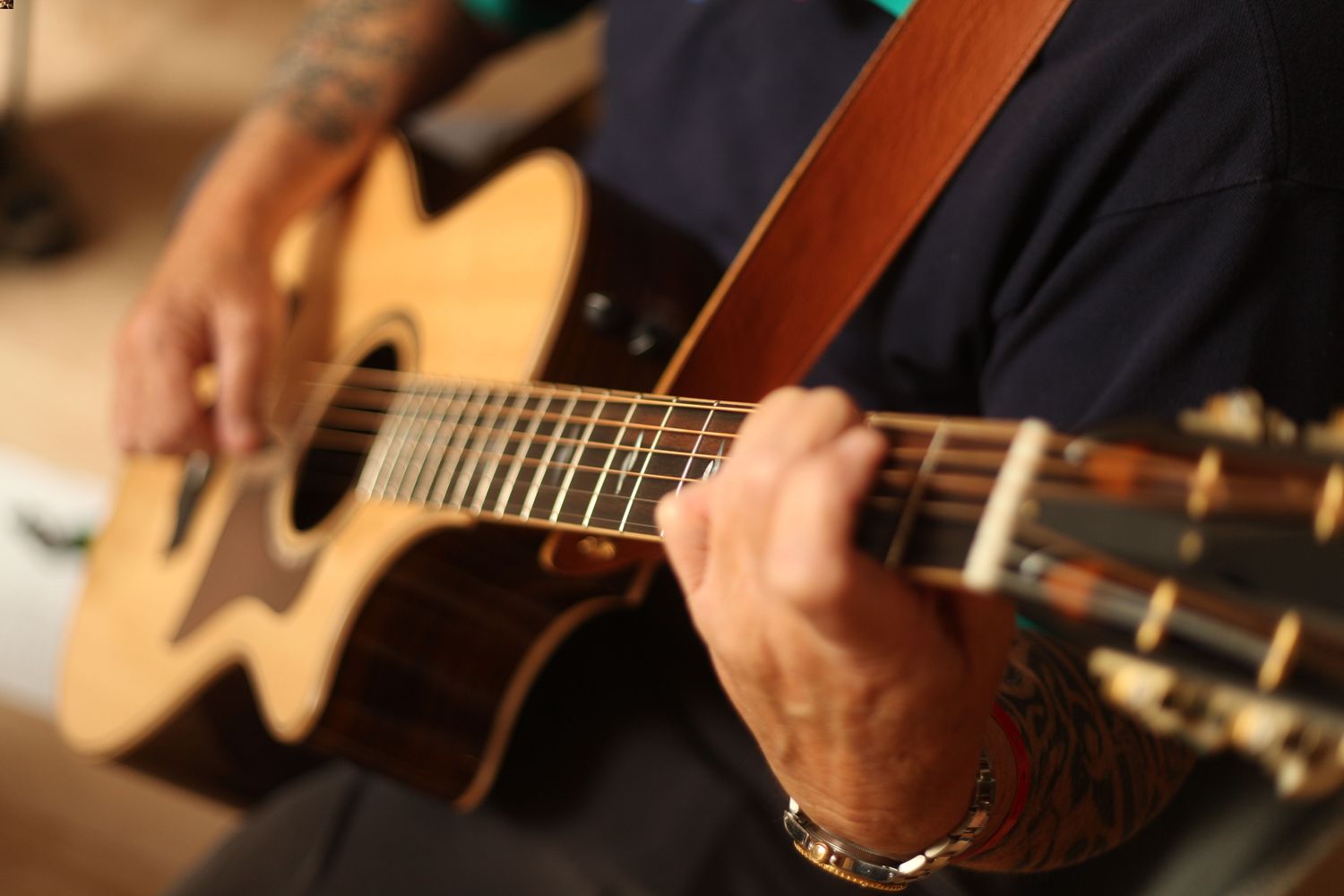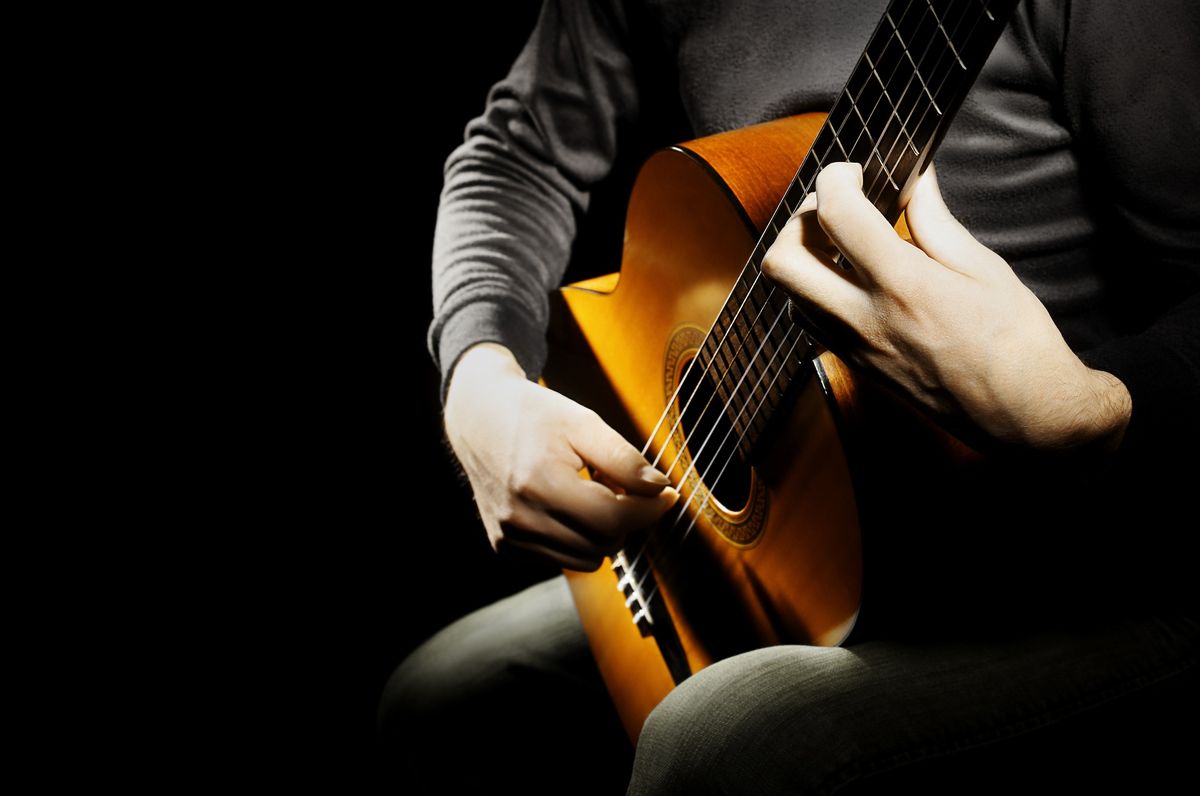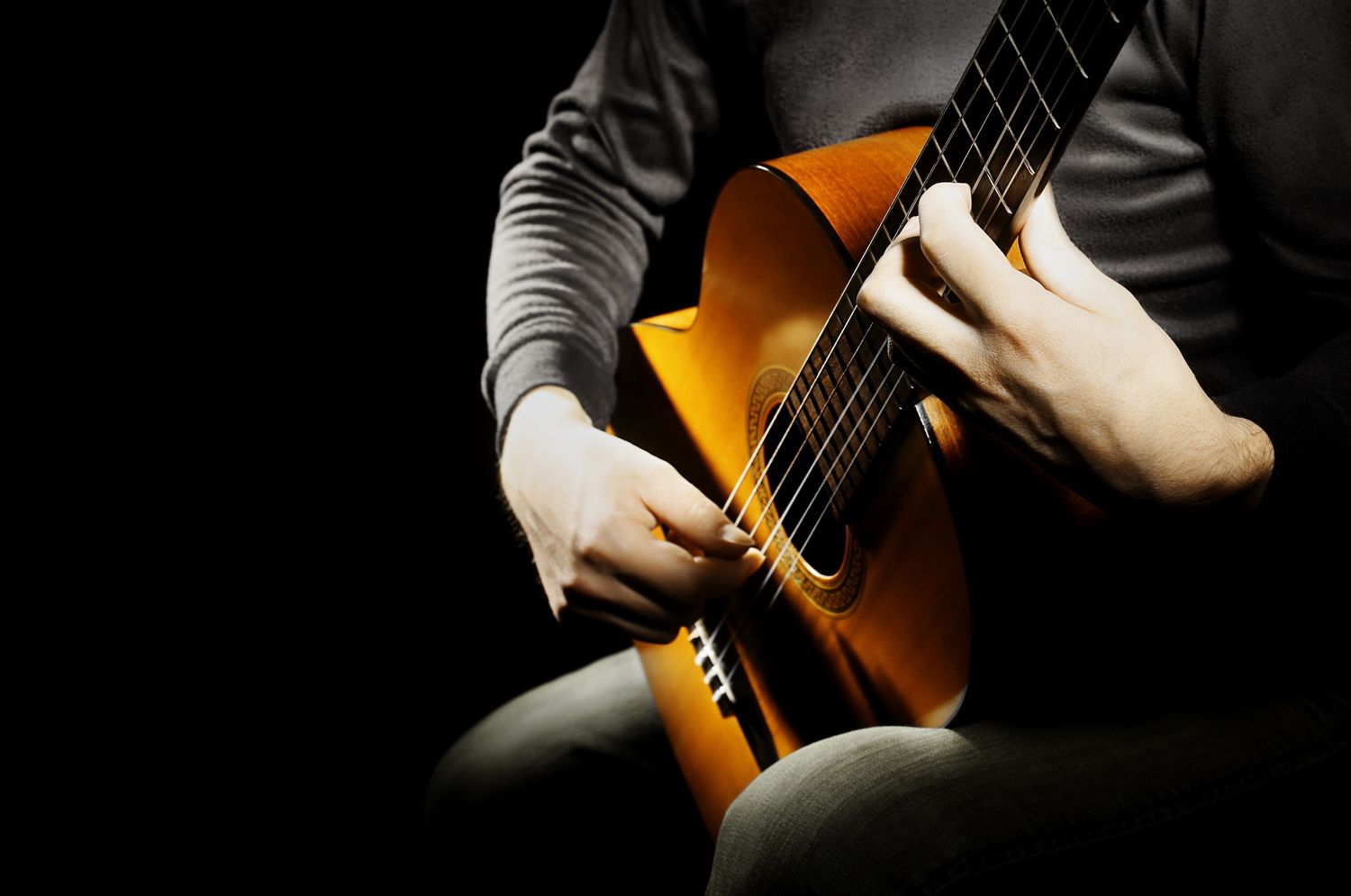Home>Instruments>Guitar>How To Play The Guitar Easily
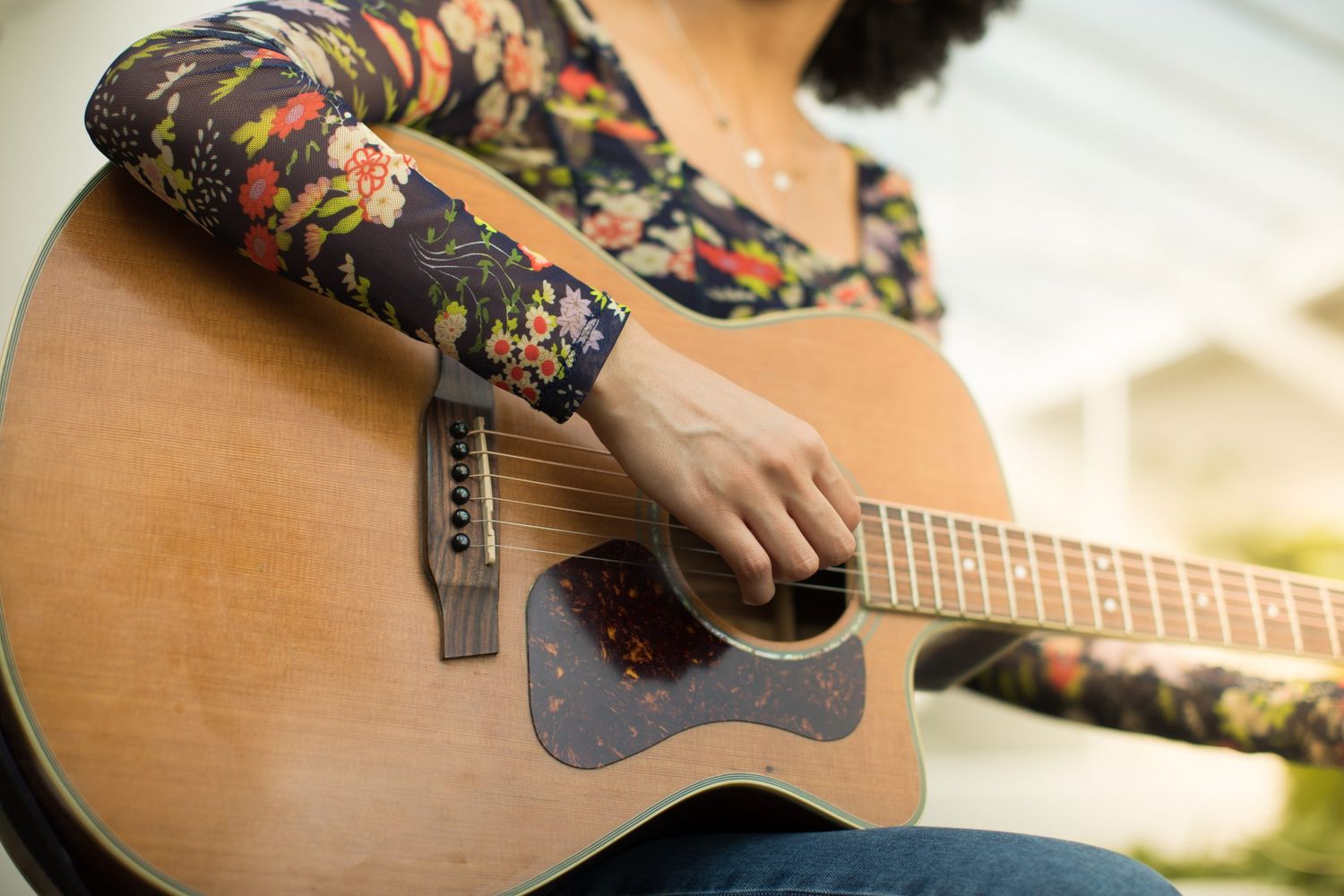

Guitar
How To Play The Guitar Easily
Modified: February 16, 2024
Learn how to play the guitar easily with our step-by-step guide. Master the basics and start strumming your favorite tunes today. Perfect for beginners and aspiring musicians.
(Many of the links in this article redirect to a specific reviewed product. Your purchase of these products through affiliate links helps to generate commission for AudioLover.com, at no extra cost. Learn more)
Table of Contents
Introduction
Learning to play the guitar can be an incredibly rewarding experience. Whether you're drawn to the soulful strumming of an acoustic or the raw power of an electric, mastering this instrument can bring a sense of joy and fulfillment. From creating beautiful melodies to expressing your emotions through music, the guitar offers a versatile and captivating means of artistic expression.
In this comprehensive guide, we will explore the fundamental aspects of playing the guitar. From selecting the right instrument to mastering basic chords and strumming techniques, this article aims to provide a solid foundation for beginners. By the end, you'll have a clearer understanding of the essential skills and knowledge needed to start your journey as a guitarist.
The world of guitar playing is vast and diverse, with styles ranging from classical and folk to rock and blues. As you embark on this musical adventure, remember that patience and dedication are key. Learning any new skill takes time, and playing the guitar is no exception. However, with the right guidance and a passion for music, you can make significant strides in your guitar-playing journey.
Whether you aspire to perform in front of a live audience or simply want to strum along to your favorite songs in the comfort of your home, the guitar has something to offer for everyone. So, grab your guitar, tune up, and let's dive into the wonderful world of playing this iconic instrument.
Choosing the Right Guitar
Before delving into the technicalities of playing the guitar, it’s crucial to select the right instrument that suits your preferences and playing style. The two primary types of guitars to consider are acoustic and electric.
Acoustic Guitars:
- Acoustic guitars are renowned for their warm, natural sound and versatility. They are an excellent choice for beginners due to their portability and the fact that they do not require additional equipment such as amplifiers.
- When selecting an acoustic guitar, consider the body style, which can range from dreadnought to concert and jumbo. Each style offers a unique tonal quality and playing experience, so it’s advisable to try out different options to find the one that resonates with you.
- Furthermore, pay attention to the tonewoods used in the construction of the guitar, as they significantly influence the instrument’s sound. Common tonewoods include spruce, mahogany, and cedar, each contributing to the guitar’s tonal characteristics.
Electric Guitars:
- Electric guitars are known for their amplified sound and are a popular choice for various genres, including rock, blues, and jazz.
- When choosing an electric guitar, factors such as body shape, pickups, and bridge type play a crucial role in determining the instrument’s sound and playability. Additionally, consider the amplifier and cable requirements for electric guitars, as they are essential components for producing sound.
- It’s worth noting that some electric guitars have a solid body, while others have a semi-hollow or hollow construction, each offering distinct tonal qualities.
Ultimately, the right guitar for you will depend on your musical preferences, playing style, and budget. Whether you opt for the classic resonance of an acoustic or the electrifying sound of an electric, choosing a guitar that resonates with you is the first step towards an enriching musical journey.
Basic Guitar Anatomy
Understanding the basic anatomy of a guitar is essential for every aspiring guitarist. Familiarizing yourself with the various components of the instrument will not only enhance your playing experience but also enable you to communicate effectively with other musicians and guitar enthusiasts.
Headstock: The headstock is located at the top end of the guitar’s neck and houses the tuning pegs, which are used to adjust the tension of the strings, thereby tuning the guitar to the desired pitches.
Neck: The neck of the guitar extends from the body to the headstock and is where the fretboard and frets are situated. It is a crucial part of the instrument, as it provides the platform for pressing down on the strings to produce different notes and chords.
Fretboard: Also known as the fingerboard, this is where the guitarist presses down on the strings to produce specific pitches. The fretboard typically contains metal frets that divide the neck into different intervals, allowing for precise placement of the fingers to create distinct musical tones.
Body: The body of the guitar is the large, hollow or solid portion that houses the sound hole (in acoustic guitars) or pickups (in electric guitars). The body’s shape and size significantly influence the instrument’s tonal characteristics and playability.
Bridge: The bridge is located on the body of the guitar and serves as an anchor point for the strings. It plays a crucial role in transmitting the vibrations of the strings to the guitar’s body, thereby influencing the overall sound projection and resonance.
Sound Hole (Acoustic Guitars): Acoustic guitars feature a sound hole on the body, which allows the sound to resonate and project outward, enhancing the instrument’s acoustic properties.
Pickups (Electric Guitars): Electric guitars are equipped with pickups, which are magnetic devices that capture the vibrations of the strings and convert them into electrical signals. These signals are then sent to an amplifier, where they are further processed and amplified to produce sound.
By familiarizing yourself with these fundamental components, you’ll gain a deeper appreciation for the intricacies of the guitar and develop a more profound understanding of how each part contributes to the instrument’s overall sound and playability.
Tuning the Guitar
Tuning is a fundamental aspect of playing the guitar, as it ensures that the instrument produces the correct pitches and maintains harmony when played either alone or with other musicians. Standard tuning for a six-string guitar, from the lowest pitch string to the highest, is EADGBE. Here’s a brief overview of the tuning process:
Using a Tuner: Electronic tuners are valuable tools for accurately tuning a guitar. They detect the pitch of each string and indicate whether it is too high, too low, or in tune. Clip-on tuners, pedal tuners, and mobile apps are all popular options for ensuring precise tuning.
Tuning by Ear: While electronic tuners are convenient, developing the ability to tune by ear is a valuable skill for any guitarist. This can be achieved by comparing the pitch of each string to a reference pitch, such as a piano, tuning fork, or another tuned instrument.
Adjusting the Tuning Pegs: To tune a string, turn the corresponding tuning peg to tighten or loosen the tension of the string. Turning the peg clockwise raises the pitch, while turning it counterclockwise lowers the pitch. It’s essential to tune the strings gradually, as abrupt adjustments can cause the strings to break or lose their stability.
Maintaining Tuning Stability: Factors such as changes in temperature, humidity, and string quality can affect a guitar’s tuning stability. It’s advisable to check the tuning regularly, especially before practice sessions and performances, to ensure that the guitar remains in tune.
By mastering the art of tuning, you’ll be able to unleash the full potential of your guitar, producing harmonious and resonant sounds that elevate your playing experience. Whether you choose to rely on electronic tuners or develop your ear for tuning, the ability to maintain precise pitch accuracy is an indispensable skill for every guitarist.
Holding the Guitar
Establishing the correct posture and positioning when holding the guitar is crucial for both comfort and optimal playing technique. Whether you’re sitting or standing, the way you hold the guitar significantly impacts your ability to fret chords, execute strumming patterns, and navigate the fretboard effectively.
Sitting Position:
- When seated, place the waist of the guitar on your right thigh (for right-handed players) or left thigh (for left-handed players).
- Ensure that the back of the guitar rests against your body, and the neck is angled slightly upward for easy access to the fretboard.
- Keep your back straight and shoulders relaxed to prevent strain during extended playing sessions.
Standing Position:
- If you prefer playing the guitar while standing, consider using a guitar strap to support the instrument’s weight and maintain stability.
- Adjust the strap to a length that allows the guitar to rest comfortably against your body, positioning it at a height that facilitates easy fretting and strumming.
- Balance the guitar’s weight between your shoulder and the lower part of your body to avoid unnecessary strain on your neck and shoulders.
Hand Placement:
- For fretting hand placement, ensure that your thumb is positioned behind the neck of the guitar, providing support and stability while allowing your fingers to press down on the strings.
- When strumming, use your dominant hand to hold the pick or pluck the strings, maintaining a relaxed and natural wrist motion to produce fluid and consistent strumming patterns.
By adopting the correct posture and hand placement, you’ll create a solid foundation for developing your playing skills and techniques. Whether you’re practicing intricate chord progressions or unleashing powerful riffs, a comfortable and stable guitar-holding position is essential for honing your musical prowess and enjoying a fulfilling playing experience.
Basic Chords
Mastering basic chords is a fundamental step in learning to play the guitar. Chords are combinations of notes played simultaneously, creating harmonious sounds that form the backbone of countless songs across various musical genres. Here are some essential chords to kickstart your guitar journey:
Open Chords: Open chords are typically played in the first three frets of the guitar and include fundamental shapes such as the C, D, E, G, and A major chords, as well as the A, D, and E minor chords. These chords are foundational and serve as building blocks for more complex chord structures.
Barre Chords: Barre chords involve using one finger to press down multiple strings across the guitar neck, creating movable chord shapes. The F major and B minor chords are examples of barre chords that provide versatility and expand your chord vocabulary.
Power Chords: Power chords, consisting of the root note and the fifth, are prevalent in rock and punk music. They offer a raw and energetic sound, making them ideal for driving rhythm parts and dynamic chord progressions.
Strumming Patterns: Once you’ve familiarized yourself with basic chord shapes, practice various strumming patterns to enhance your rhythmic skills. Experiment with downstrokes, upstrokes, and syncopated rhythms to add depth and groove to your chord playing.
By mastering these foundational chords and exploring different strumming patterns, you’ll lay the groundwork for playing countless songs and developing your own musical style. Practice transitioning between chords smoothly and accurately, and experiment with creating your chord progressions to unlock the full potential of your guitar-playing abilities.
Strumming Techniques
Mastering strumming techniques is essential for bringing rhythm and dynamics to your guitar playing. Whether you’re accompanying your singing, playing along with a band, or performing instrumental pieces, the way you strum the strings significantly influences the overall sound and feel of the music.
Downstrokes and Upstrokes: The most basic strumming technique involves using downstrokes (strumming the strings in a downward motion) and upstrokes (strumming in an upward motion). Practice maintaining a steady rhythm and consistent strumming motion to achieve a balanced and even sound.
Strumming Patterns: Experiment with various strumming patterns to add texture and groove to your playing. Common patterns include the down-down-up-up-down-up pattern and the classic rock rhythm pattern, among others. Each pattern contributes to the overall feel of the music and complements different styles and genres.
Dynamic Strumming: Varying the intensity and force of your strumming can create dynamic contrast within a song. Transitioning from soft, delicate strums to powerful, emphatic strokes adds depth and emotion to your playing, allowing you to convey a range of moods and expressions through the guitar.
Accompaniment Styles: Different musical styles call for distinct strumming techniques. Whether you’re playing folk, blues, pop, or rock, adapting your strumming approach to suit the genre enhances the authenticity and impact of your performance.
By honing your strumming techniques, you’ll develop a keen sense of rhythm and timing, enabling you to elevate the musicality of your guitar playing. Whether you’re strumming along to your favorite songs or creating original compositions, mastering the art of strumming opens up a world of expressive possibilities on the guitar.
Playing Simple Songs
Once you’ve familiarized yourself with basic chords and strumming techniques, it’s time to apply your skills to playing simple songs. This step not only reinforces your understanding of chord progressions and rhythm but also allows you to experience the joy of making music on the guitar. Here’s how to approach playing simple songs:
Song Selection: Choose straightforward songs that feature common chord progressions and uncomplicated strumming patterns. Folk songs, traditional ballads, and popular sing-along tunes often provide an excellent starting point for beginners.
Chord Transitions: Focus on transitioning smoothly between chords within the context of a song. Pay attention to the chord changes and practice moving from one chord to the next in a fluid and seamless manner, ensuring that each chord rings out clearly.
Rhythmic Consistency: Maintain a steady and consistent rhythm as you strum through the song. Keep in mind that the timing of your strums is just as important as the chords themselves, as it contributes to the overall groove and feel of the music.
Singing Along: If you enjoy singing, consider incorporating vocals into your practice sessions. Singing while playing the guitar enhances your musical coordination and allows you to engage more deeply with the song, fostering a holistic approach to musical expression.
Performance Confidence: As you become more comfortable playing simple songs, gradually build your confidence by performing for friends, family, or even an audience if the opportunity arises. Embracing performance experiences, no matter how informal, helps you grow as a musician and cultivates a sense of accomplishment.
Playing simple songs not only reinforces your foundational skills but also instills a sense of fulfillment and motivation as you witness your progress. Embrace the process of learning and enjoy the journey of bringing music to life through the guitar.
Practicing Regularly
Consistent and dedicated practice is the cornerstone of mastering the guitar. Whether you’re a beginner or an experienced player, establishing a regular practice routine is essential for honing your skills, expanding your musical repertoire, and achieving continuous growth as a guitarist. Here are key principles to consider when practicing regularly:
Setting Realistic Goals: Define clear and achievable goals for your practice sessions. Whether it’s mastering a new chord progression, improving your strumming technique, or learning a specific song, setting realistic targets helps maintain focus and motivation.
Structured Practice Sessions: Organize your practice time into focused segments, allocating dedicated intervals for chord practice, scales, finger exercises, and repertoire building. A structured approach ensures a balanced development of various aspects of your playing.
Repetition and Patience: Repetition is key to reinforcing muscle memory and enhancing fluency in playing the guitar. Embrace the process of gradual improvement and remain patient as you work through challenging passages or techniques.
Exploration and Creativity: While disciplined practice is crucial, allow room for exploration and creativity during your sessions. Experiment with improvisation, songwriting, or exploring new musical styles to keep your practice sessions engaging and inspiring.
Seeking Guidance: Consider seeking guidance from experienced instructors, online tutorials, or instructional resources to gain valuable insights and feedback on your playing. Constructive feedback and expert guidance can accelerate your progress and prevent the development of detrimental playing habits.
Consistency and Persistence: Commit to regular practice, even if it means dedicating a relatively short amount of time each day. Consistency and persistence yield cumulative results, and small, consistent efforts over time lead to significant skill development.
Remember, the journey of learning the guitar is as rewarding as reaching proficiency. Embrace the process, stay patient, and celebrate your progress along the way. By integrating regular practice into your lifestyle, you’ll embark on a fulfilling and enriching musical odyssey with the guitar as your faithful companion.
Conclusion
Congratulations on embarking on the enriching journey of learning to play the guitar! As you’ve discovered throughout this guide, the guitar offers a world of musical possibilities, allowing you to express your creativity, connect with others, and experience the joy of bringing music to life. Whether you’re drawn to the soulful resonance of an acoustic guitar or the electrifying sound of an electric, the guitar holds endless potential for artistic exploration.
Remember, the path to guitar mastery is paved with patience, dedication, and a genuine love for music. By selecting the right instrument, understanding its anatomy, mastering basic chords and strumming techniques, and embracing regular practice, you’ve laid a solid foundation for your musical endeavors.
As you continue your guitar-playing journey, keep your passion alive, seek inspiration from diverse musical genres, and remain open to continuous learning and growth. Embrace the challenges, celebrate your progress, and find joy in the process of honing your craft.
Whether you aspire to perform on stage, serenade loved ones, or simply find solace in the melodies you create, the guitar will accompany you on a profoundly fulfilling and personal odyssey. Cherish the moments of discovery, the thrill of mastering new techniques, and the magic of creating music with your own hands.
So, pick up your guitar, let the music resonate, and savor the journey ahead. With each strum and chord, you’re not only mastering an instrument but also nurturing a lifelong passion that will enrich your life and the lives of those around you. The guitar awaits, ready to be your faithful companion on this extraordinary musical voyage.

